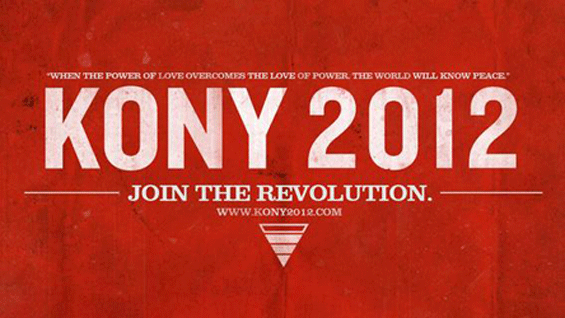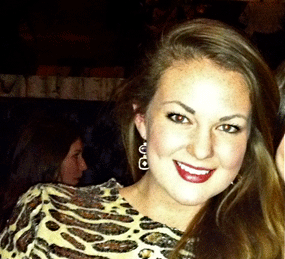The Youth Will Speak For Their Own Generation

“Hurry up Wes, we’re pushing curfew,” I said, for the
one-hundredth time. It was a late, sticky August night in Monrovia,
Liberia and I was waiting for Wesley to finish paying the shirt tailor
for his alterations. At last, Wesley quickly shoved all his change into
his backpack. Zip, zip, and we were ready to hit the road
back towards the port where Mercy Ships was docked. Mercy Ships is a
nonprofit organization, which brings free medical care to the coast of
West Africa, and we were both working on the ship for the summer.
We started out on our journey back to the ship in a brisk
but forceful walk through the crowds. The sun was beginning to set and
we already knew that we would be in trouble with the captain for not
making curfew before eight o’clock. In an undeveloped country, like
Liberia, the chaotic past of guerillas and warfare seem to seep through
the cracks after nightfall.
We shoved our way through the crowd to what seemed like a
clearing in order to gain some road on the rest of the travelers. As I
looked down to watch where I was stepping, I missed that Wesley had
come to a complete halt with his hands sticking out straight behind him
as if to pull my body in close behind him for protection. I looked over
his shoulder and I made direct eye contact with a man who was not much
older than myself, standing there with five other friends. Their
clothes were tattered; their arm muscles were bulging underneath their
smooth, dark skin. At first he seemed angry, but when I did not remove
my gaze his look became more of a warning. Each one of the men was
holding an automatic machine gun.
The six men began to walk towards the crowd and pushed
through to keep going on their designated track. Wesley grabbed my hand
and we walked, jogged, darted, and made it safely back to the ship in
record time. We never knew if those men were there to protect the
people of Liberia, or if they were the guerillas our captain had warned
us about earlier (They were still in hiding and were trying to raise up
their army from the ashes and induce another civil war.) Either way,
we did not want to stay to find out. After seeing several instances of
near-violence, I feel most of the younger generation is not correctly
informed of the violence that takes place in this area of the world. If
I had never taken that two-week trip with my Dad the summer after I
graduated high school, I would have never heard of the violence that
Central and West Africa undergo everyday. If I had not heard of it, how
would I have become aware of the detrimental living conditions that
these people live in everyday? If it were happening in any other area of
the world it would be on the front cover of Newsweek Magazine.
The recent movement of Kony 2012 has been made popular
through the social media, Facebook, and the Invisible Children
organization in order to create awareness of the violence that is
taking place in Central Africa. According to the viral YouTube video, Kony 2012,
Joseph Kony is the Ugandan leader of the child-recruiting Lord’s
Resistance Army. For the past twenty-six years this man has been
abducting children from their homes in order to sell them into sexual
slavery or raise them to become soldiers in his army. The violence that
these children are taught to tolerate consists of killing their
parents, friends, and mutilating peoples faces into disfigurement. These
children are scared into thinking that this lifestyle is the only way
to stay alive. However, there has been much controversy after the
release of the Kony 2012 YouTube video. Many were disapproving
of Invisible Children, since the money donated is not going to where
the giver originally thought. Research raised several questions but also
provided several positive answers. Even though there might be
questions that arise about Invisible Children’s fundraising, they are
making young people more aware of the global crisis and encouraging
them to participate. Young adults want to give back to the world and be
a person this world can count on instead of giving into the selfish
pressure of the previous generations to make the big bucks in order to
keep your family roots happy.
Washington Post states, “A child dies every four seconds, according to UNICEF.
Fourteen die every minute. Some of their deaths are mourned publicly;
many go without attracting any notice at all” (“Travyon Martin: One of
Seventeen Children Shot Very Publicly This Month”.) This statistic and
the trip to Mercy Ships are some of the reasons why I chose to research
this area of the world. Elizabeth Flock brings up several valuable
arguments in her Washington Post article published on March 8, 2012,
titled “Invisible Children Responds to Criticism about ‘Stop Kony’ Campaign,”
Flock addresses the facts about Joseph Kony’s organized army and
manipulation of the Ugandan government. She states, “Over the past two
decades, the LRA made it common practice to enter towns and kill the
adults, take the male children as soldiers, and sexually abuse the
female children.” According to this article this has been going on for
two decades and the majority of the rest of the world had no awareness
about the cruelty that was taking place. The YouTube video, Kony 2012,
has created a movement within the younger generations to raise
awareness and stand up for the rights to better the chance at achieving
world peace. This video has been passed around in the social medias of
Facebook, Twitter, emails, etc. It has sparked a phenomenon to notify
governmental officials to do something about Joseph Kony.
Jedediah Jenkins, director of idea development for Invisible
Children, originally launched the YouTube video on March 5, 2012, and
after millions of views, he was criticized for the content of the
video. One major criticism was against the Invisible Children
Organization itself; that the money donated to the cause of this
organization (as previously mentioned) was weighted heavily towards the
fundraising of the Invisible Children Campaign instead of given
directly to the Ugandan people. Although it is unethical, Invisible
Children is an up and coming organization that relies heavily on
advertisement through the media (I would consider that a worthy
cause of my donations.) “Kony 2012 and the Prospects for Change,”
written by Mareike Schomerus, adds criticism to the topic: “Such
organizations have manipulated facts for strategic purposes,
exaggerating the scale of LRA abductions and murders and emphasizing
the LRA’s use of innocent children as soldiers, and portraying Kony — a
brutal man, to be sure — as uniquely awful, a Kurtz-like embodiment of
evil.” In response the research developed from the World Bank
estimates that around 66,000 Ugandan children have been confirmed
abducted from their homes and forced to fight.
People are now involved, want to do something for others,
and are asking each other to help in achieving this broad goal of
peace. Now that there has been awareness on this issue, the LRA has
migrated North of Uganda. This provides more information for critics to
accuse on inaccuracy. However, Kony is still alive. He is still out
there. He is still in Central Africa making his way to North Western
Africa. That itself should be motivation for people to support this
cause.
The YouTube vide prompted people to get involved. From March
5 to April 20, Invisible Children ask their supporters to take the
time to put up posters, change their facebook profile picture, tweet,
blog, and share the news of Kony 2012. Their goal is for
America to wake up on April 21 and have their neighborhoods, cities,
and states blanketed with “Stop Kony,” in order to encourage
governmental officials to take action. However, one major critic of
Invisible Children’s methods is the doubting tumblr blog “Visible
Children”: “These problems are highly complex, not one-dimensional and,
frankly, aren’t of the nature that can be solved by postering,
film-making and changing your Facebook profile picture, as hard as that
is to swallow,” the blog wrote. According to Guernica Magazine,
there were 70 million viewers in one week of the video being launched,
which proved that the tactics of Invisible Children were working.
Invisible Children created the movement and have made it easy to get
involved. The Kony 2012 movement engages the world and encourages this generation to take action.
